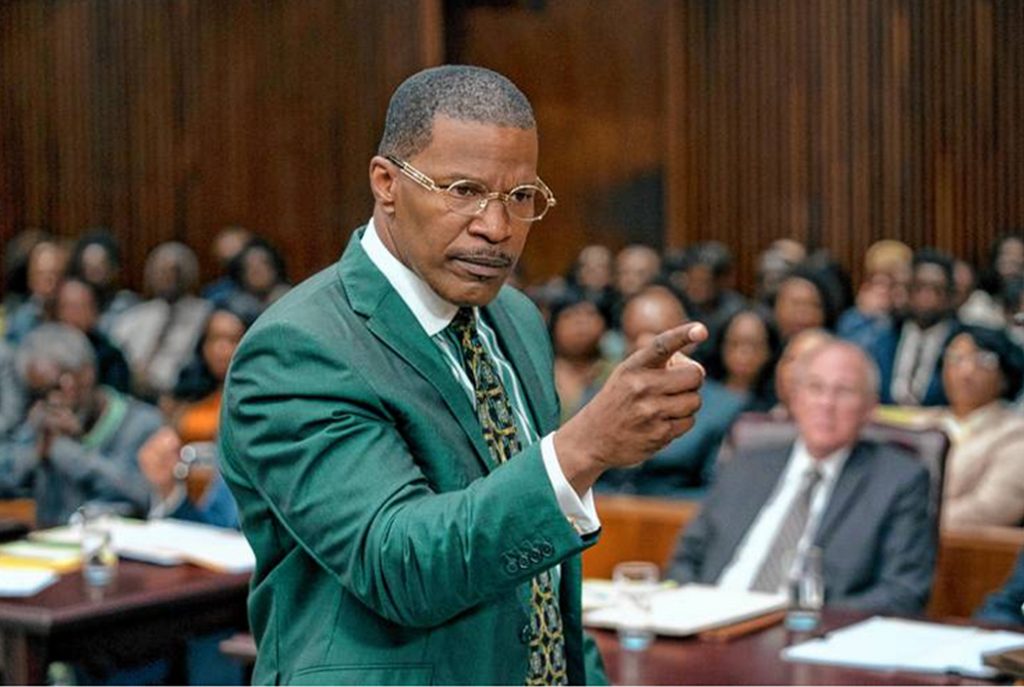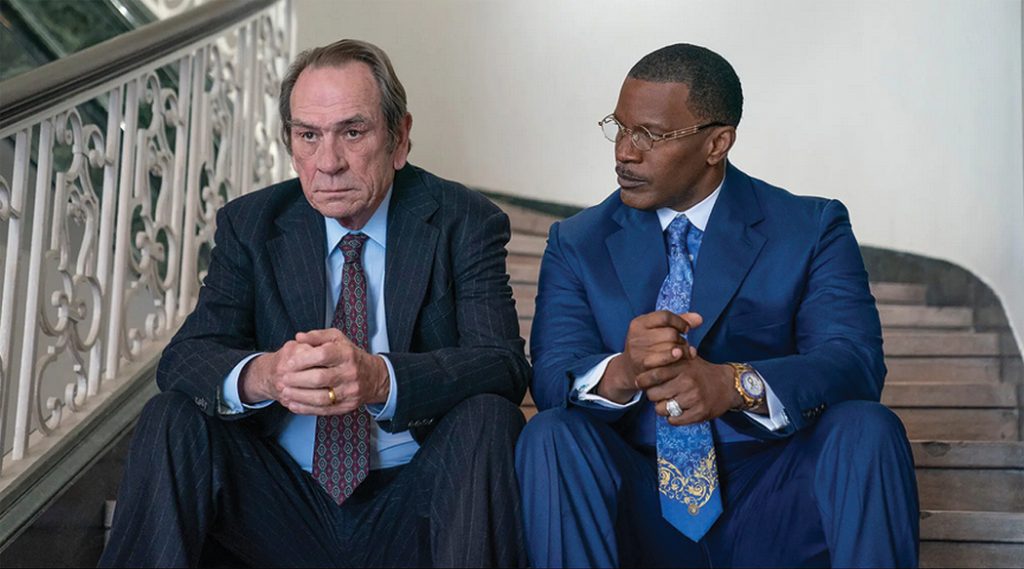
If the title of this October movie release sounds like just another serving of Halloween horror, I’m happy to report it is not. Based on actual events recounted in Jonathan Harr’s 1995 book of the same title, followed by his New Yorker article in 1999, The Burial revisits a Mississippi lawsuit against a North American funeral conglomerate for breach of contract with a small funeral business. Yeah, sorry, that intro made me yawn too, but don’t change the channel. This movie is not just about the law. The Burial is about people.
Jeremiah O’Keefe, portrayed by an aging Tommy Lee Jones, owns eight funeral homes and an insurance business in Biloxi, Mississippi. As he turns 75, he’s determined to bequeath his enterprise to his 13 children and 24 grandkids. But some unfortunate business decisions have compromised his revenue, which is now failing to cover his expenses.
O’Keefe’s long-time friend and business lawyer, Mike Allred (Alan Ruck), urges him to sell off a couple of his funeral homes, so the cash infusion can prop up the rest of his business. This leads O’Keefe to a brief yet memorable meeting on a mega-yacht in Vancouver, Canada, with Raymond Loewen (Bill Camp), a corporate predator who eats small businesses for breakfast.

We can’t help but wonder if the humble, soft-spoken O’Keefe is in over his head. As the months roll by, Loewen does not add his signature to the sale contract, nor does he communicate. This stalls O’Keefe from seeking another buyer, even while his funds keep depleting. Does Loewen’s silence suggest hostile intent? O’Keefe finally agrees to charge Loewen with breach of contract. Enter Attorney Willie E. Gary (Jamie Foxx), a lawyer who specializes in personal injury, a profession bearing the nickname “ambulance chaser.” But first, a quick segue.
Gary’s life story alone is a worthy topic. One of eleven children born to a Georgia sharecropper, Gary’s destiny leads him into law school. And in one of his first cases, he files and wins a racial discrimination lawsuit against a landlord who once refused to rent Gary an apartment and, we can assume, never expected to see him again.
Meanwhile, Willie Gary’s showmanship and winning track record make him a courtroom legend in a $3,000 suit. His percentage of his clients’ huge compensations for pain and suffering finances his own lush lifestyle. Jamie Foxx portrays Gary with bravado, including his vision of litigation as personal warfare.
The fact that Gary has never tried a contract dispute makes him a risk. But the movie’s story includes situational incentives for hiring a successful Black lawyer. And the prospect of suing a mega-industry convinces Gary to sign on, though the film doesn’t mention Gary’s compensation incentives. He teams with Allred, who knows contract law, but whose courtroom energy makes vanilla sound interesting.
One of the most refreshing characters is junior counsel Hal Dockins (Mamoudou Athie), O’Keefe’s young Black friend whose legal experience is limited. Allred has no use for Dockins, and not just because of his youth. But having Dockins on your team is like carrying a lucky charm in your pocket. His legal savvy and street smarts make him a crucial asset to the team, adding its own comic irony.
The other vital character is Loewen’s Black defense attorney, Mame Downes, well played by Jurnee Smollett. Downes is a Harvard Law grad whose cross-examinations turn witness testimonies on their sides. In the real trial, however, Loewen’s defending council was a white male attorney with shorter claws. And he was unprepared for the mindset of a Southern jury.
This court trial challenges both teams while they’re each trying to establish the truth. Then again, every lawyer knows that a trial is not about truth, it’s about what they can prove. And how much shine they can scrape off the opposition to sway the jury. The gift of this film is that as the case for each side gets shaken, the characters shed their facades and reveal their vulnerabilities, giving the story a more intimate human tone.
Fact-checking websites including History vs Hollywood, Decider, and many more explore the distance between the true story and the film by screenwriter Doug Wright and cowriter-director Maggie Betts. Betts felt the script needed updating, which altered some details, added characters, and suggested a racial perspective. While it’s hard to sleuth every alteration, some of the changes seem to add interest and dimension while moving a dated story into current times.
Available in movie theaters and streaming on Prime, The Burial studies people’s behavior under critical conditions when everything is on the line. The best guide for watching is to make no assumptions about the characters or where the story is going. No one is perfect, people are mostly good or mostly not-so-good. We get a taste of it all, especially the things people will do for money.
